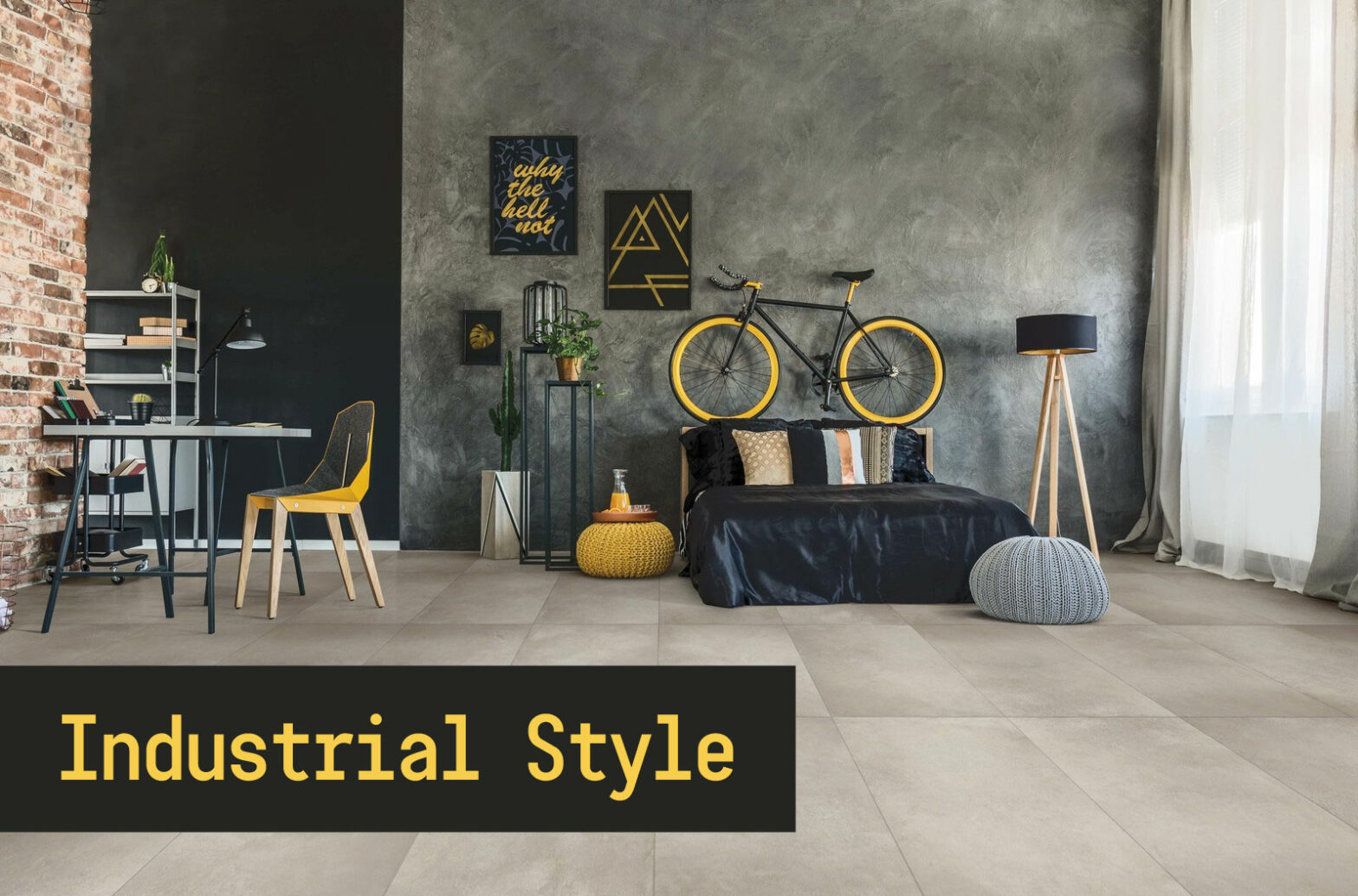Origins and characteristics of a furnishing style originating from the recovery of disused factories and abandoned warehouses.
The choice of the floor and covering of a room in the house is generally based on the overall style of the house on which we are carrying out a complete renovation or a simpler restyling.
The starting point is therefore to identify the style chosen for the project through moodboards, sketches or even more traditional newspaper clippings. Depending on the style, we can say that there is a more suitable tile to give overall coherence and harmony to the work.

As those who have been following our blog since the beginning will know by now, existing printing technologies have led the ceramic sector to have infinite graphic possibilities to be applied to porcelain stoneware, resulting in faithful reproductions in technical versions of natural materials, wood and marble, or continuous surfaces. such as resin and microcement.
Here are the style criteria that professionals apply to choose the right effect depending on the style, in this case for the industrial style.
Where and when industrial style was born
The Industrial Style was born in New York in the 1950s from the need to find new low-cost homes and, after the war, abandoned factories, warehouses and industrial warehouses began to be recovered and used. He achieved notoriety thanks to the American films and TV series set in these spaces, and thanks to the affirmation of Pop Art with Andy Warhol and his Factory, a former factory in Manhattan, which became the meeting point for artists and creative.
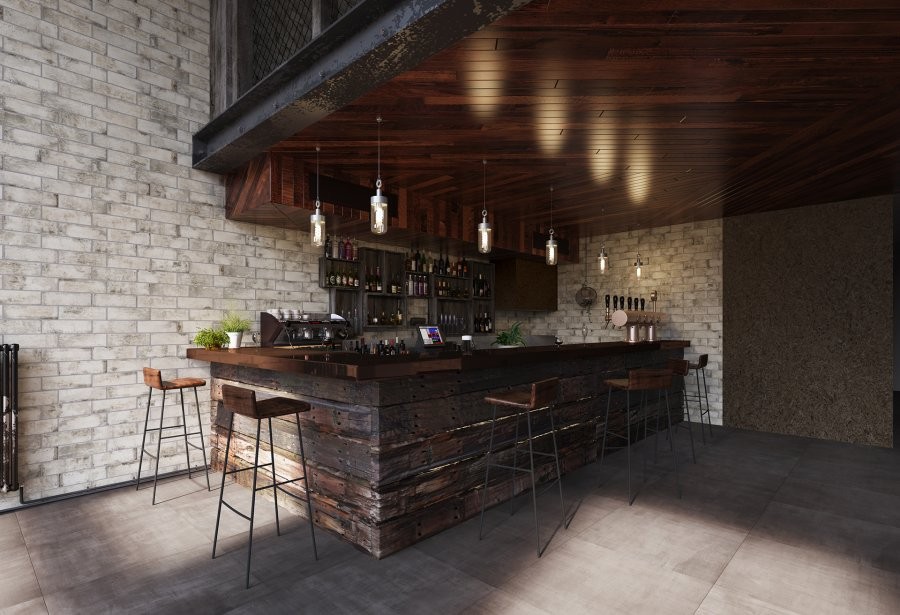
What are the characteristics of the industrial style
Given its origin, the Industrial style requires that the ceilings are high, the dividing walls reduced to a minimum, that natural light filters through large iron windows, bricks and exposed walls, copper or iron pendant lamps of large dimensions and the surfaces are rough and without joints, like resin and concrete. To avoid making the rooms too cold, today raw wooden planks, leather seats, leather carpets and other elements that provide warmth are combined with “industrial” surfaces.
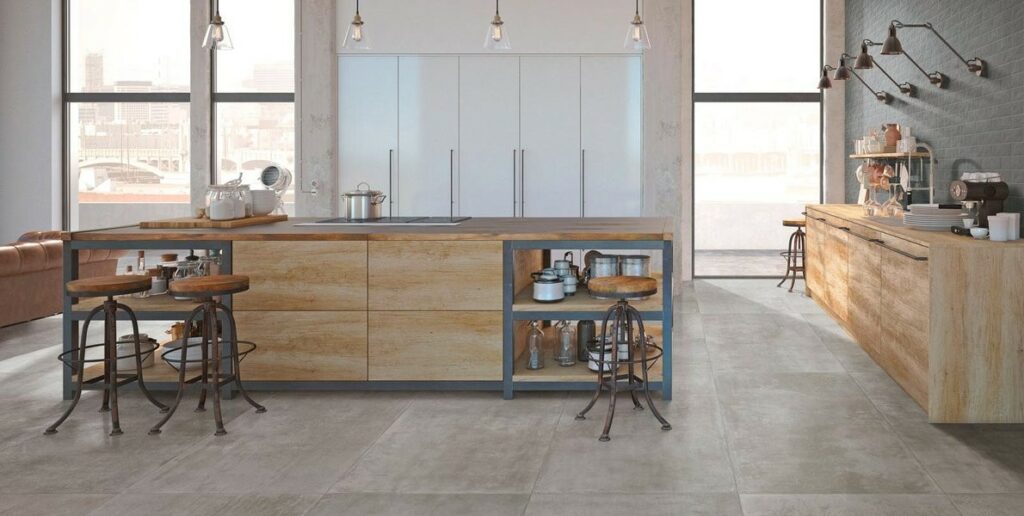
How to choose the most suitable floor tiles to recreate an industrial style
Given the characteristics described above, the resin and cement effect are definitely suitable for an Industrial Style because they recreate the rough effect that was originally present in warehouses and factories, where the floors are mainly made of industrial concrete. The mainly chosen colours are grey shades which can be declined in various nuances from the coldest to the warmest up to greige, a neologism which indicates a very warm tone of grey.
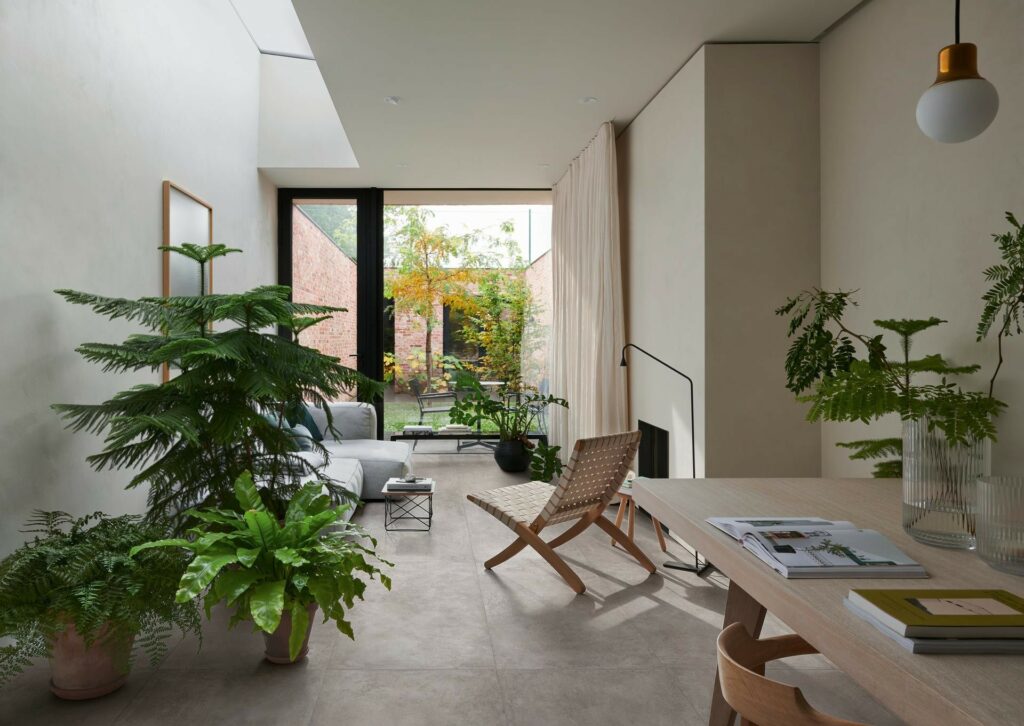
Which formats to choose to obtain the industrial effect
In terms of format, large formats which can reach the size of large porcelain stoneware slabs are preferable. The large size of the tile allows us to minimise the presence of joints and makes the surface more continuous, favouring the industrial effect we want to achieve.
What characteristics do typical industrial style wall tiles have?
When we think of an industrial-style loft, one of the first images that come to mind are exposed bricks. Although the original bricks are generally a constituent element of a wall, it is possible to recreate the same effect through the use of tiles with classic thicknesses which are applied on the normal wall of the house on a purely decorative level. These tiles have a brick format and feature graphics that faithfully reproduce the effect of the original clay bricks. The tones are those of terra cotta red and the joints are visible in a contrasting tone.
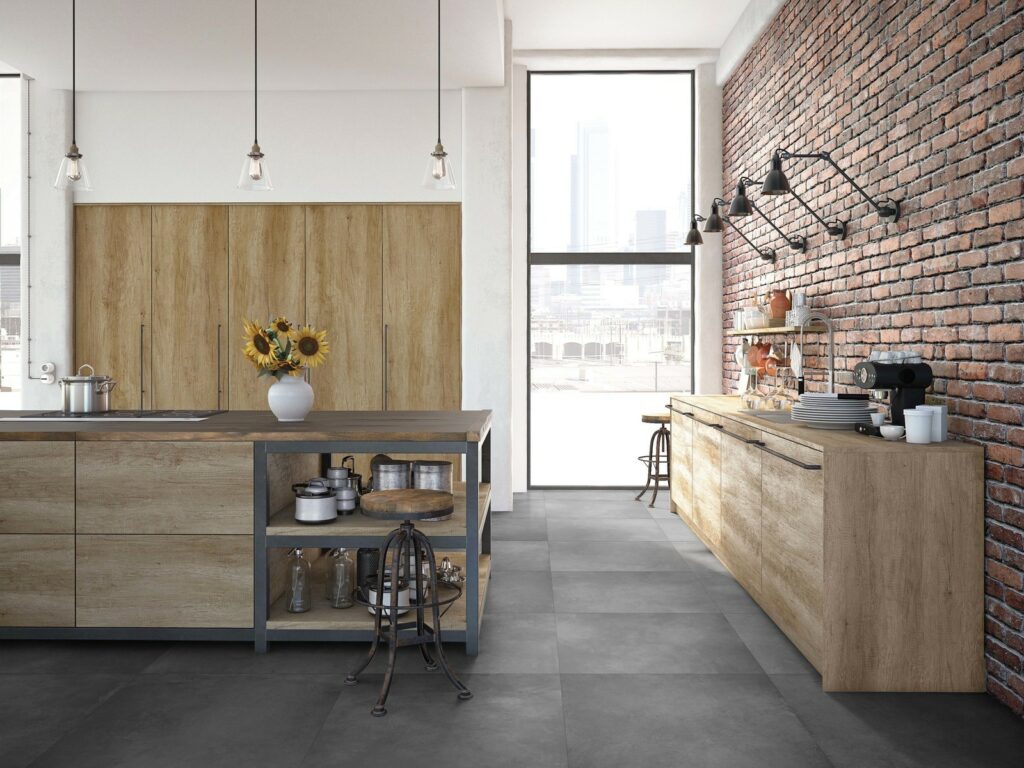
Other materials suitable for an industrial style
Other materials to include in an industrial style project are raw iron, which can be chosen to make railings and stairs, chair legs and lamps, wood with knots and debarked edges, which can be inserted as an element of a worktop or snack in the kitchen. Natural and aged leather, which can cover the seats of sofas, chairs or armchairs. These materials are also faithfully reproduced by the tile industry and can be inserted as characterising elements in floors and coverings.
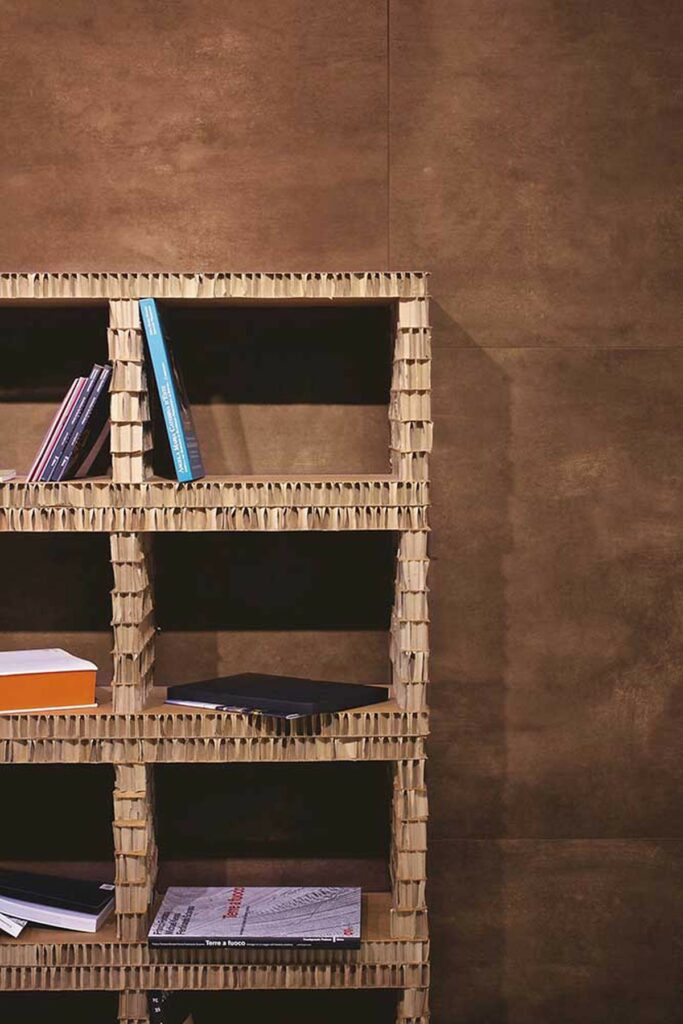

The use of raw materials and recycled elements
Generally speaking, the use of raw materials and recycled furnishings is preferred, which have a lived-in flavour and also present some imperfections. The concept is that of recovery and reuse, not necessarily perfectly restored elements. The key to success is knowing how to balance the various elements.

